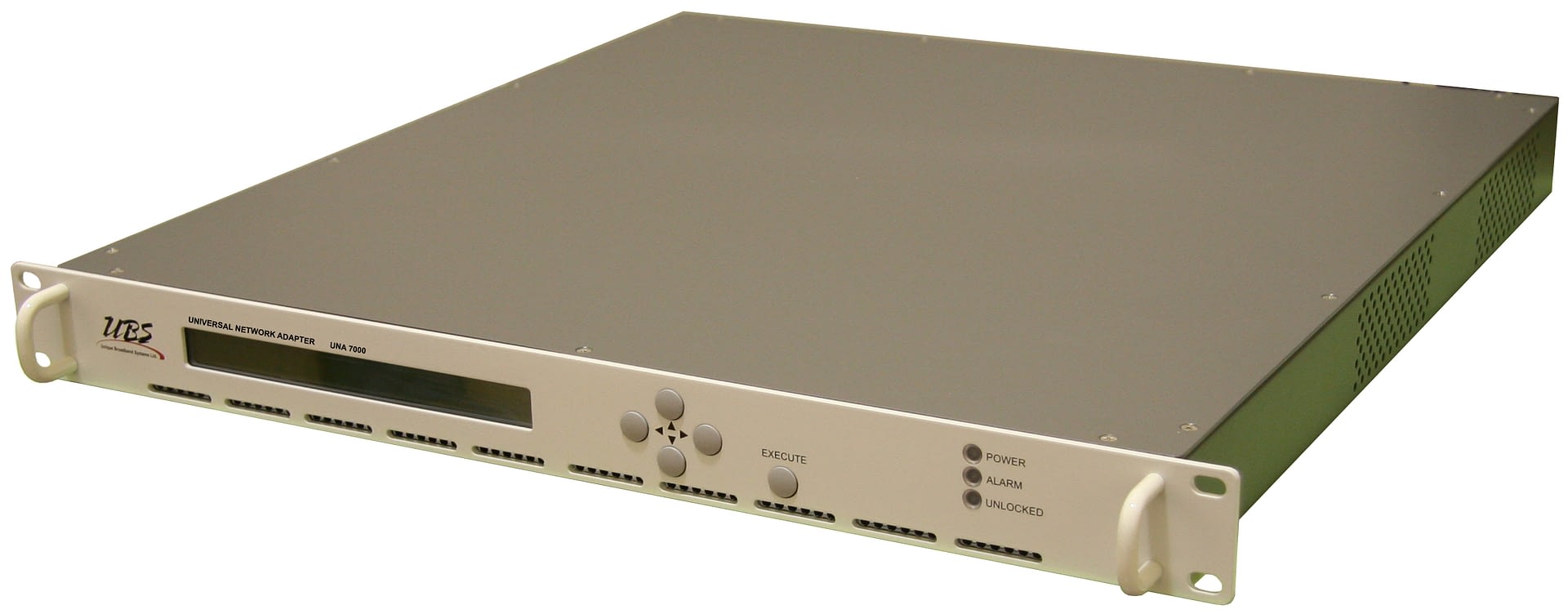[button size=”medium” color=”red” style=”none” new_window=”true” link=”https://uniquesys.com/wp-content/uploads/pdfs/1026_UNA-7000-56477-02-S07-04.pdf”]Download Specifications[/button]
Product Features
–
- DVB-T or DTMB waveform support
- DVB-T waveform supports MIP insertions and hierarchical mode
- DTMB waveform supports SIP insertion
- SFN time and frequency synchronization
- Selectable ASI inputs and outputs
- Bit rates adjusted with transmission mode
- GbE transport stream input/output (optional)
- Dual channel operation (optional)
- Internal GPS (optional)
–
Description and Application
–
Overview
For the operation of digital terrestrial TV networks (DVB-T or DTMB), where several transmitters broadcast the same programs on the same RF channel frequencies (Single Frequency Networks), the transmitters require precise frequency and time synchronization. The frequency (10 MHz) and time (1PPS) reference signals can be obtained from a GPS receiver at each transmission site. The SFN Adapter fulfils the task of inserting “synchronization marks” (MIP or SIP packets) in a MPEG transport stream in full accordance with DVB-T and DTMB standards.
–
The basic functions performed by the SFN Adapter are:
• Insert a megaframe or second frame initialization packet (MIP or SIP) into an MPEG transport stream
• Adjust the bitrate of the transport stream to be synchronous with an external reference, and in accordance with the chosen transmission mode
• Provides signaling/mode data for the control of individual transmitters or modulators
–
Compliant with ETSI standards: EN 300 744 and TS 101 191
Compliant with Chinese standards: GB20600-2006, GY/T 229.1-2008
–
MIP Insertion (DVB-T Mode)
MIP insertion occurs once per megaframe, with a time interval dependent on the selected guard interval. The MIP indicates when the first packet in a mega-frame (Synchronization Time Stamp, STS) begins transmitting. The time reference is an external 1 pulse per second signal, obtained from a GPS receiver.
–
SIP Insertion (DTMB mode)
SIP insertion occurs once per second and is synchronized with the 1PPS signal from a GPS receiver. The SIP contains the transmission parameters for the modulator and the SFN maximum delay.
–
Bitrate Adaptation
The SFN Adapter is provided with two serial (ASI) inputs that accept an MPEG transport stream according to DVB recommendations (188 or 204 byte packets). The output may be configured as either 188 or 204 byte packets for DVB-T mode. In DTMB mode, only 188 byte packets are supported. Note: the maximum bitrate has to include the inserted MIP or SIP, which means the input net bitrate must be slightly lower than the output bitrate. The SFN Adapter removes null packets from the input signal and inserts MIP or SIP packets. New null packets are then added to produce a precise output bitrate, which is required for the selected transmission mode (dependent on code rate, constellation and guard band). The maximum allowable net bitrate is governed by the selected transmission mode. As the transport rate is modified, the SFN adaptor performs PCR re-stamping.




